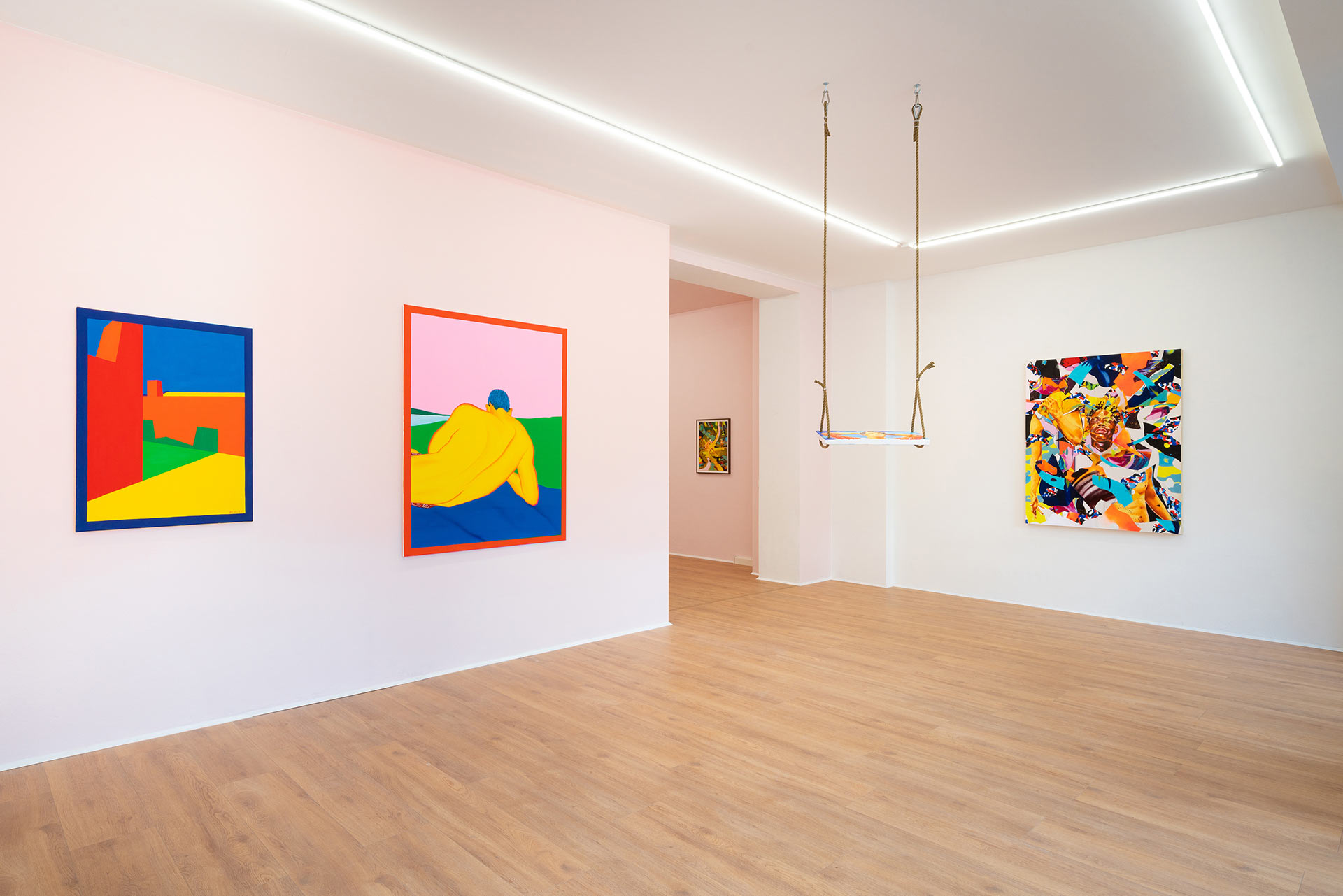The duo exhibition Swing State shows works by Norbert Bisky and Navot Miller. Two artistic positions whose affinities and divergences sharpen the eye for the particularity of the other. Bisky was born in 1970 in the former GDR, Miller in 1991 in a Jewish Orthodox settlement in Israel. What they have in common is the experience of breaking out of the confines of ideologically shaped parental homes and their adopted home of Berlin, the hedonist’s place of longing.
The title Swing State alludes to the children’s playground outside the gallery’s door as well as to the surrounding city as a play space for adults and the instability of political systems. Two swings designed by the artists take up the motif: A life in limbo is shown, outcome uncertain. Large-format works, usually Bisky’s metier, he leaves to Miller in this exhibition. In Swing State, Bisky focuses on a series of smaller works on paper that show intertwined bodies. Wrestlers on a battlefield that could just as easily be sexual as athletic in nature. In addition, some mirror works are shown. A technique developed by Bisky, which in recent years has taken up an increasingly broad space in his repertoire of expression. Painted canvases are cut up and arranged like collages on reflective surfaces. In addition to fragmented faces and set pieces of urban culture, the face of a retrograde Hebrew clock also appears here. A reference to the relativity of the understanding of time as well as Bisky’s deep connection to Israel, where he lived for several months in 2015.
Through the mirrors integrated into the works, everything surrounding them becomes part of the pictorial staging itself. Viewers are confronted with their own sight, and Miller’s paintings are also reflected in Bisky’s works in a literal way.
Miller’s vibrantly coloured surfaces, which combine to form landscapes, architectural structures, and figures, juxtapose Bisky’s ambivalences with a very tangible, if surreal and dreamlike, reality. On the surface, his images tell of the comforts of a mobile lifestyle. Routines of escapism: Motifs from Europe’s south, the U.S. and Israel are mixed together. Pools, vacation apartments, the cell phone always on the nightstand. Brands and apps that provide a constant stream of impressions and encounters. Miller also playfully turns himself into a brand by affixing his signature as a logo to ever different places in his paintings.
His view is never cynical, however, but rather tender. His paintings tell of longing for certain people and situations, lovesickness as a universal feeling. Miller searches for islands of intimacy in the banal. Small moments of truthfulness in the abundance of possibilities. A back that rises up like a protective wall, a furtive glance caught through an open door.
Finally, in the smallest room of the gallery, each artist shows a portrait of their own mother. A conscious confrontation with the specific circumstances of origin. In Swing State, two generations also meet, Gen X and Millennials, both of whom have been shaped in two ways by the all-pervasive power of pop and consumer culture: once as a broken promise and once as the visual archive of a world gone off the rails.
Bisky appreciates Miller’s boldness, the immediacy of his art, while the latter, conversely, admires Bisky’s attention to detail and mastery of execution. Neither Miller nor Bisky understand the artist’s position as admonitory or even accusatory. They are observers of the present, fascinated by the kaleidoscope of media-mediated realities and their possibilities of escape. They are interested in the coping mechanisms of human beings.
Text by Diana Weis
